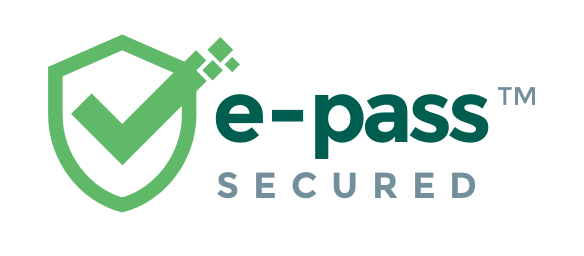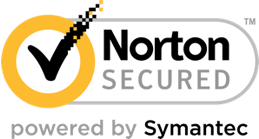question archive ACCT 205 Assignment Rolling Thunder Bikes Rolling Thunder Bikes was started by Steve Wiseman, a former Olympic cyclist and marketing executive, in 1994 using some of his savings and by cashing in a bond given to him by his late grandmother
ACCT 205 Assignment Rolling Thunder Bikes Rolling Thunder Bikes was started by Steve Wiseman, a former Olympic cyclist and marketing executive, in 1994 using some of his savings and by cashing in a bond given to him by his late grandmother
Subject:AccountingPrice:20.99 Bought20
ACCT 205
Assignment
Rolling Thunder Bikes
Rolling Thunder Bikes was started by Steve Wiseman, a former Olympic cyclist and marketing executive, in 1994 using some of his savings and by cashing in a bond given to him by his late grandmother. Initially, Steve sold a small number of high-end bicycles to local racers and enthusiasts out of his garage and provided custom service for his clients. Although his sales were small the margin on these expensive bikes was large and he developed a local following who were impressed by his knowledge and by the superior work he performed on their bikes. By 1996, Steve opened his first store in Toronto and had expanded to a wider array of bikes including mountain bikes, commuter bikes and children’s bikes. He also stocked a wide variety of components, clothing and accessories for cyclists.
Rolling Thunder Bikes (RTB) took off as more and more people became interested in cycling both for fitness and as a mode of transportation. In addition, Steve started a bike club and racing team that were both affiliated with the store, drawing more and more customers in who were interested in riding and learning from him. By 1998 he had opened two additional stores in Toronto, and a year later had four stores in Toronto as well as stores in Barrie, London, and Ottawa.
By 2004 the company had sixteen stores in Ontario, Quebec and Calgary, Alberta. Steve remained the sole shareholder of the business and had financed the expansion through retained earnings and various bank loans. While on a trip to Vancouver in the summer of 2005, he walked into a cool looking bicycle shop named Lightning Bikes which was owned by a woman named Samantha Shaklebot. Steve was intrigued by the brands that Lightning Bikes carried as they were very similar to his lineup. He had been thinking about continuing to expand to Western Canada beyond his one store in Calgary but was worried about his ability to manage stores across Canada by himself.
Over dinner with Samantha, Steve proposed that he would buy out her four stores in Vancouver in exchange for 15% of the equity in RTB. Samantha agreed, and with her help Steve was able to open an additional five stores in British Columbia as well as four new stores in the Western provinces. In order to fund this expansion, Steve and Samantha decided to take the company public in 2007. Steve retained 55% of the equity, Samantha kept her 15%, and the remaining 30% was sold to the public in an IPO.
Steve and Samantha decided that they had saturated the Canadian market and felt that their attractive stores that featured high quality products and superior service would do well in the US market. In 2008 they opened two US stores, one in Buffalo, NY and the other in Seattle, WA, close to where both of the owners lived. Over the next three years they opened nine additional stores in the US. While the US stores did okay, the market proved to be much more competitive, so sales and margins in US stores were never as high as comparative Canadian stores, despite spending significantly more on marketing south of the border. By 2020, RTB realized that the US stores were not profitable, and they decided to close down the US operations and exit that market for good. It planned to complete the exit from the US market in early 2021 after selling off some of the assets and arranging to close down all of the stores.
Important accounting information
The company’s head office is located at their flagship store at 1800 Yonge Street in Toronto. The US operations, which is a separate division of RTB, has its head office in a rented building at 65 Coulter Ave. in Buffalo, NY.
RTB uses the allowance method for accounting for its receivables and estimates that 1% of its sales on account will be uncollectable. Sales on account are approximately 20% of merchandise sales revenue and represent sales made to schools, race teams, and other institutions. All other sales are paid for with either cash or, in most cases, credit cards. The company uses a perpetual inventory system, separating its merchandise inventory from its parts (service) inventory. Both are valued using the FIFO method.
When it has extra cash, the company sometimes purchases various investments in order to earn a return on its capital. These short-term investments are recorded at fair value on the balance sheet. Gains or losses from these investments are included in net income. In addition, the company has made long term, strategic investments in two Canadian bicycle component manufacturers. As an investor in these businesses, RTB is the sole supplier of these components in Canada. The investments in these businesses are recorded at fair value and any gains or losses are recorded in other comprehensive income.
The company depreciates all of its fixed assets using the straight-line method with the following estimated useful lives: Building – 30 years, vehicles – 5 years, equipment – 8 years.
The company maintains an operating line of credit that is margined by accounts receivable (up to 80%) and inventory (up to 50%). RTB has a policy of maintaining a minimum cash balance of $20,000 and using excess cash to pay down its line of credit.
The company has a mortgage on its building and land (4% interest rate) and a long-term loan (6% interest) that is secured by the equipment and vehicles. Principal payments on the mortgage are $363,000 per year and $300,000 on the other long-term loan.
RTB has authorized an unlimited number of common shares and has issued 1,800,000 shares to Steve, Samantha and other shareholders as of April 1, 2019. During 2020 the company issued an additional 200,000 shares at an average cost of $8.00 per share. There are no other classes of shares in the company. The company’s policy has been to pay out approximately 60% of profits as cash dividends and to retain the remainder for reinvestment into the business, although Steve is considering increasing the dividend payout in the future.
The company’s tax rate is 20%.
Required
Part 1
You are required to prepare, in good form, the income statement for the year ended March 31, 2020 as well as the statement of owners’ equity and the balance sheet, using the attached trial balance and the information contained herein. You should consider the following:
- Statements should be prepared in accordance with IFRS and in a format that is suitable for a Canadian public company (i.e., look at the statements of some other Canadian companies and copy their format, layout, etc.) and should be prepared on the appropriate tab in the attached excel file.
- The trial balance accounts have all been adjusted but the temporary accounts have not yet been closed – this will be done after the statements have been prepared.
- US revenues and expenses have been reported in separate accounts as the US operates as a separate operating unit from the Canadian operations. The US assets have been placed in an account called Assets Held for Sale and have been revalued at their fair value. The company expects to dispose of these assets within one year.
- Your balance sheet should include both 2020 and 2019. The values for the 2019 balance sheet can be found on the worksheet Comparative BS.
- You should prepare notes to your financial statements in a format similar to the notes of other Canadian corporations. Your notes should include important information about the company and its accounting policies, as well as detailed calculations to support the figures on your financial statements, where required. You may prepare the notes on the NOTES tab in the excel file or you may submit a separate Word file if you prefer.
Part 2
After you submit Part 1 of the assignment, you will receive a corrected version of the statements to compare with your own. Using the corrected version of the statements, prepare the cash flow statement using the indirect method. Your statement should calculate the ending cash balance directly from the statement (i.e., change in cash + opening cash balance) and this should, of course, match the ending cash balance on the balance sheet. DO NOT hard-code or link the ending cash balance to the balance sheet. You should also complete the Ratios page of the excel file.









